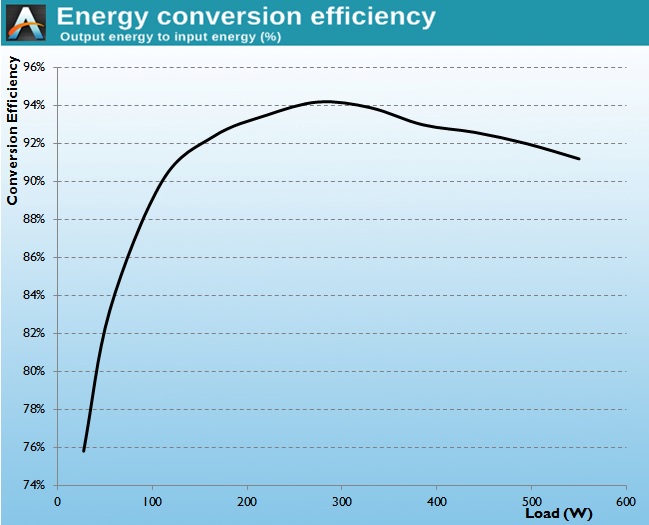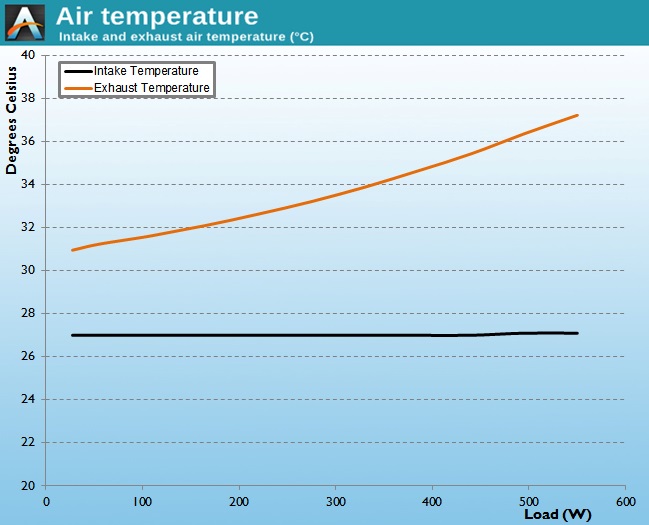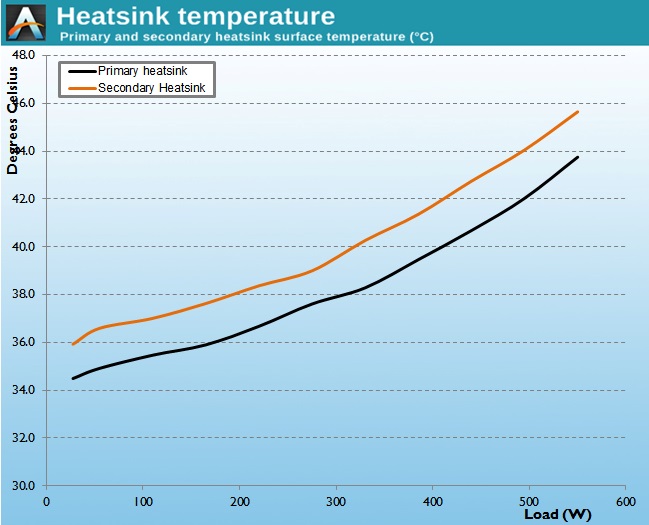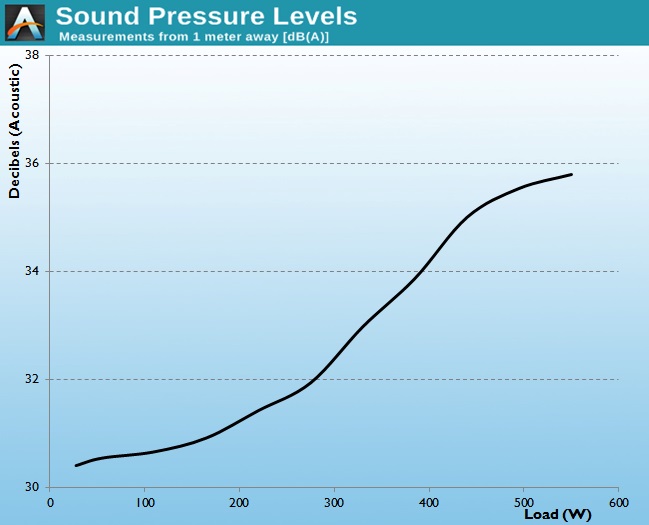The Cyonic AU-550x PSU Review
by E. Fylladitakis on August 17, 2015 8:00 AM EST- Posted in
- Cases/Cooling/PSUs
- Seasonic
- PSUs
- 550W
- Cyonic
Cold Test Results
For the testing of PSUs, we are using high precision electronic loads with a maximum power draw of 2700 Watts, a Rigol DS5042M 40 MHz oscilloscope, an Extech 380803 power analyzer, two high precision UNI-T UT-325 digital thermometers, an Extech HD600 SPL meter, a self-designed hotbox and various other bits and parts. For a thorough explanation of our testing methodology and more details on our equipment, please refer to our How We Test PSUs - 2014 Pipeline post.
The efficiency of the AU-550x is very high but not astounding considering that this is an 80Plus Gold certified unit. However, it is improved over the G-series platform we reviewed a while ago. The improvement is not vast but it is well above what we could consider an accuracy or consistency error. The average efficiency within the nominal load range (20% to 100% of the unit's capacity) is 92.5%, with a maximum of 94.2% at 50% load. The efficiency is fairly consistent at higher and lower loads, staying at over 90% across the entire nominal load range. Like all current PC switching PSUs, the efficiency drops sharply at very low loads. We received a reading of 75.8% with a load of 28 Watts (5%), which is actually fairly good for such a low power output.
The very high efficiency allows the Cyonic AU-550x to maintain a rather linear thermal profile. It requires very little cooling at lower loads, therefore the fan speed is kept to a minimum and the PSU remains entirely silent. As the load rises, the thermal management of the PSU steadily increases the speed of the fan to meet the thermal needs of the PSU. Still, even with the PSU fully loaded, there is nothing more than a slight hum coming from the fan, which provides more than enough airflow for the cooling needs of the PSU.















30 Comments
View All Comments
YoloPascual - Monday, August 17, 2015 - link
I knew it! The looks and the brand name pertains to one and only OEM.Seasonic
Seonic
Cyonic
DanNeely - Monday, August 17, 2015 - link
I've noticed this on a few other Seasonic designs, but why do they split the modular 24pin cable into 18+10 pin connectors on the PSU itself?jonnyGURU - Monday, August 17, 2015 - link
So it fits on the limited real estate available on the modular PCB. And the extra four pins are for voltage sense (why 28 instead of just 24).DanNeely - Monday, August 17, 2015 - link
OK, Why does it need 4 extra wires for voltage sense though? IIRC the doubled wire on one of the 3.3 pins from the standard layout is for vSense; 2 more cover the +5 and +12V rails. That leaves 2 more unaccounted for. +5VSB and -12V are possible I guess; but for as lightly utilized as they are it seems like overkill to me.Innokentij - Monday, August 17, 2015 - link
Been loving Seasonic since i got my first PSU from them. Best there is.Beaver M. - Tuesday, August 18, 2015 - link
My Enermax is 8 years old now, still running strong and the fan is as quiet as on day one.I could NEVER say that from a Seasonic, and I used quite a few in PCs and had friends battle with them in their own. One friend had to replace one at the very start, then again after a year and again after 3 years.
tamalero - Wednesday, August 19, 2015 - link
PC Power & cooling here. These units have been top notch all the time.Noone of my units have failed. and I'm on the third 750W Silencer series.
dananski - Wednesday, August 19, 2015 - link
Bought a fantastic PSU from Hiper over 8 years ago after reading the review here on AT, and still working wonderfully. In fact I think it has vastly outlived the company.Flunk - Monday, August 17, 2015 - link
I've learned, over time, that you don't pay attention to the name on the box. It's the OEM that really matters and because of that I'd recommend one of these all day long.jonnyGURU - Monday, August 17, 2015 - link
That's not the best way to shop since it's not the OEM that supplies the cable compliment, service, warranty, etc. If you buy it and it dies in a year and you can't find who to send the PSU back to or you have to pay $20 to send the PSU to the Netherlands, you start to think how much those things matter.